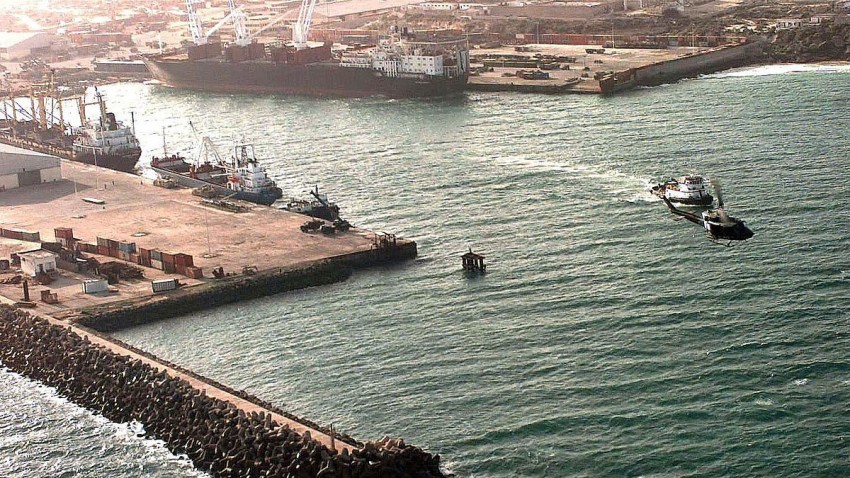In late May, the Somali terrorist group al-Shabaab staged two major attacks on the same Saturday, striking Mogadishu’s parliament building as well as pulling off the first-ever suicide attack in neighboring Djibouti. In one day, the group demonstrated not only its continuing ability to strike the heavily defended heart of the Somali capital, but also to reach new targets.
The attacks, which killed at least 10 people in Somalia and at least three in Djibouti, occurred after weeks of sustained global focus on Nigeria’s Boko Haram, which kidnapped some 276 schoolgirls in mid-April. They raised the question of whether, amid international preoccupation with West Africa’s terrorism problem, al-Shabaab has been able to make gains in East Africa.
Since 2010, a combination of Somali government troops and regional forces under the auspices of the African Union Assistance Mission to Somalia (AMISOM) have inflicted heavy casualties on al-Shabaab. International and government forces have also managed to retake strategic ground from al-Shabaab’s control, including the capital Mogadishu and the port city of Kismayo, where the group
had an important base and fundraising operation.
AMISOM and government troops have continued to make gains outside the major cities as well. Al-Shabaab put up little resistance to a March offensive by Somali and allied security forces, effectively ceding 10 towns to government control by the end of the month,
Voice of America reported.
Meanwhile, life seemed to improve in the capital. Following al-Shabaab’s declared “strategic withdrawal” from Mogadishu in 2011,
reports from the city emphasized its “remarkable comeback,” including new businesses and returning residents. Similarly high hopes attached to the new parliament sworn in in 2012—Somalia’s first formal legislature in more than two decades, which the U.S. recognized in 2013. At the same time, however, al-Shabaab
managed to attack the capital at least four times in 2013—an average of one attack every three months in Somalia’s most heavily fortified city.
Analysts who spoke to Voice of America said this pattern of activity reflected a conscious decision on the part of al-Shabaab’s leadership to engage in asymmetric warfare rather than face opposing military forces head on. And even while the group has withdrawn from some towns, it has encircled and blockaded them, preventing goods from reaching residents and forcing prices up.
The group has combined these tactics with strikes outside Somalia, focusing in particular on Kenya and Ethiopia, both of which have sent forces to Somalia to battle al-Shabaab. But Djibouti represented a new front for the group and is the site of a U.S. military base that U.S. President Barack Obama has called “extraordinarily important” for U.S. military operations in the region, including counterterrorism missions in Somalia and Yemen.
Taken together, the May 24 attacks in Mogadishu and Djibouti raise troubling questions about how strong al-Shabaab really is and how successful international efforts to combat the group have really been.
Still, with al-Shabaab as with other militant groups, it’s notoriously difficult to evaluate what any particular attack, or even set of attacks, says about the group’s overall trajectory. “It is inherently hard to know how strong they are,” says Martha Crenshaw, a terrorism specialist and professor at Stanford University, referring to al-Shabaab. “Sometimes high-profile attacks are a sign of weakness, but not necessarily.”
This very question came up last September, when the group staged its dramatic attack on Nairobi’s Westgate mall that killed at least 67 people. Shortly after the attack, correspondent
Peter Greste outlined in Al Jazeera the theory, espoused by officials in Nairobi and Mogadishu, that the attack represented “a lashing out by a movement on the ropes; a last-ditch attempt [by al-Shabaab] to prove its legitimacy” from a position of military weakness. Greste called that line of thinking “dangerously optimistic,” noting al-Shabaab’s continued freedom of movement and fundraising outside of major Somali cities and even in the outer reaches of Mogadishu itself.
Whatever level of strength such attacks signify, al-Shabaab has been staging an increasing number of them beyond Somalia’s borders, according to a database maintained by Daveed Gartenstein-Ross and Henry Appel for the Foundation for Defense of Democracies. “There were nine attacks credited to al-Shabaab outside Somalia’s borders in May,”
they wrote recently. “In contrast, in the first four months of 2014, al-Shabaab was only suspected of involvement in eight total attacks outside of Somalia—seven in Kenya and one in Ethiopia.”
West African terrorism has attracted renewed focus and calls for international help, and rightly so. But it’s clear that despite massive international efforts sustained over a period of years, terrorism remains alive and well on the other side of the continent as well.

